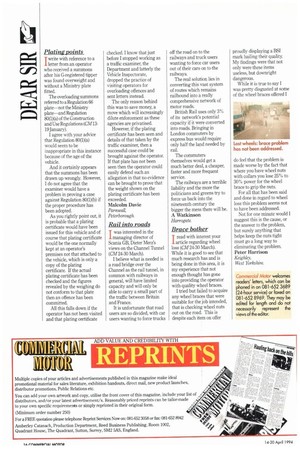Plating points
Page 20

If you've noticed an error in this article please click here to report it so we can fix it.
Iwrite with reference to a letter from an operator who received a summons after his G-registered tipper was found overweight and without a Ministry plate fitted.
The overloading summons referred to a Regulation 66 plate—not the Ministry plate—and Regulation 80(1)(a) of the Construction and Use Regulations (CM1319January).
I agree with your advice that Regulation 80(1)(a) would seem to be inappropriate in this instance because of the age of the vehicle.
And it certainly appears that the summons has been drawn up wrongly. However, I do not agree that the examiner would have a problem in proving a case against Regulation 80(1)(b) if the proper procedure has been adopted.
As you rightly point out, it is probable that a plating certificate would have been issued for this vehicle and of course that plating certificate would be the one normally kept at an operator's premises not that attached to the vehicle, which is only a copy of the plating certificate. If the actual plating certificate has been checked and the figures revealed by the weighing do not conform to that plate then an offence has been committed.
All this falls down if the operator has not been visited and that plating certificate checked. I know that just before I stopped working as a traffic examiner, the Department and latterly the Vehicle Inspectorate, dropped the practice of visiting operators for overloading offences and sent letters instead.
The only reason behind this was to save money, a move which will increasingly dilute enforcement as these agencies are privatised.
However, if the plating certificate has been seen and details of that taken by the traffic examiner, then a successful case could be brought against the operator. If that plate has not been seen then the operator could easily defend such an allegation in that no evidence can be brought to prove that the weight shown on the plating certificate has been exceeded.
Malcolm Davie Parnwall, Peterborough.


























































































